#3. Confirmed! Got The Plot! 🕺
The Good Life and Self-Sufficiency. A Few Suggestions for a Revolution. A Transportation Dilemma. And a Rhubarb Harvest.
The Good Life
I grew up watching 1970s British sitcoms like Are You Being Served? Porridge, The Two Ronnies, George and Mildred, Man About the House, Some Mothers Do Ave Em, Bless This House, and of course Fawlty Towers. I have fond memories of many of them yet would no doubt cringe at their politically incorrect scripts if I watched them today. I giggled along with the canned laughter at the not-so-subtle sexist, racist, and homophobic quips, many of which went over my head as a kid.
But there is one sitcom that I believe has survived the test of time and that is The Good Life with the fabulous Felicity Kendal, Richard Briars, Penelope Keith and Paul Eddington.
Tom and Barbara Good, desperate to find meaning in their lives, quit the rat race and set up an allotment in their back yard in a well-to-do neighbourhood, much to the horror of their neighbours, in particular the indomitable Margo, played by Penelope Keith, who considers herself part of the upper class enjoying her civilised life of martinis in the evening and the odd social do. Her life is about keeping up appearances and maintaining their social status.
But not so Tom and Barbara. As Tom says to his wife in Series One, Episode One, “I’ve defined what “IT” is. It’s breaking the circle. Going to work, to get money, to translate into things which we use up, which makes you go to work again, etc, etc. The norm. What we should be doing is working at the job of life itself.” *
The show was a huge success, not just because of the great scripting and excellent acting, but because it was something that resonated with many people at a time when frozen dinners and processed food were beginning to take the place of homecooked meals and consumerism was turning into a dirty word. And it still does resonate. Interest in self-sufficiency seems to be gaining momentum all over the world, going by the number of blogs, vlogs, books, and courses available these days.
I mention this because while there is a growing interest in getting back to basics, growing your own food, learning survival skills, etc, society still seems to be dragging its feet when it comes to teaching our kids the most basic knowledge everyone should know. And if we don’t learn it at home, then maybe we should at school. So why don’t we?
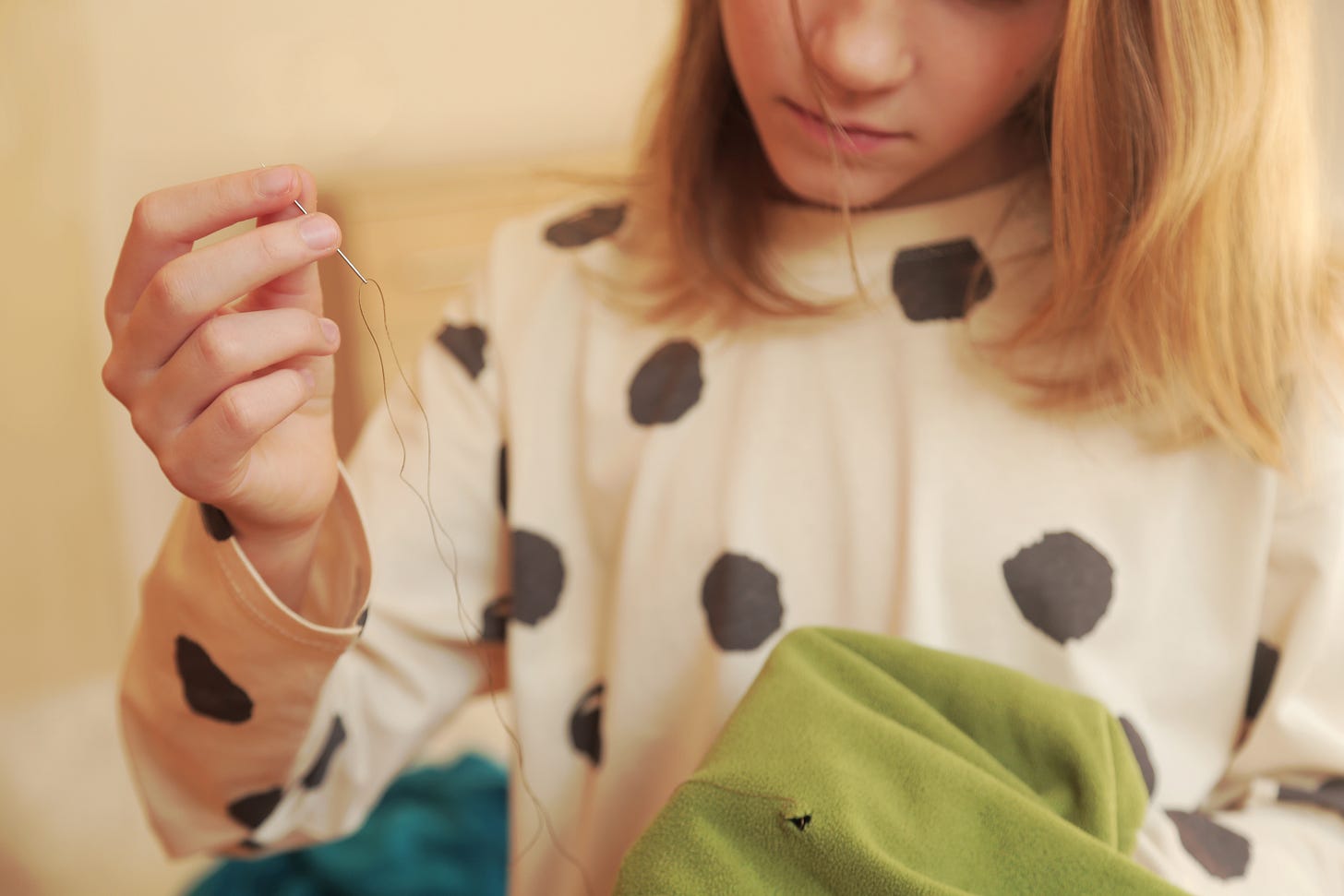
Some of the things the Goods are forced to do as their savings dry up, is re-purpose clothes, mend broken tools and appliances, and make sure their produce lasts the winter - something most people knew how to do only a few generations back. These days it’s the end of the world if the supermarkets run low on toilet paper or pasta.
I’ll be ranting more about the woes of our education system in another post but suffice to say that with rising inflation and a growing number of families struggling to make ends meet every month, now would be a good time to encourage more self-sufficiency and make it a key policy priority in our governments, local and national/federal.
I’ve come up with some ideas on how they might go about that.
Teach basic life skills, focusing on growing and preparing food in both primary and secondary school. But make it fun. (More on this idea in a later post)
Offer free/low-cost cooking workshops to adults that focus on preparing nutritious meals from scratch using locally sourced ingredients.
Sponsor workshops on canning, pickling, and other food preservation techniques.
Provide grants or subsidies for families to start their own vegetable gardens.
Offer free or low-cost gardening workshops and provide starter kits with seeds and tools.
Organize community workshops on basic home maintenance and repairs.
Provide tool lending libraries where families can borrow tools for DIY projects.
Provide resources and classes on budgeting, saving, and managing household finances to local communities, offering incentives for young families who participate in financial literacy programs.
Offer rebates or tax credits for families who invest in energy-efficient appliances and home improvements like insulation or solar panels.
Run programs that provide free energy audits and personalized recommendations for increasing home energy efficiency.
Establish time banks where families can trade services with one another, such as babysitting, gardening, or tutoring.
Promote local barter systems or swap meets for exchanging goods and services.
Offer permits and support for families interested in keeping backyard chickens, bees, or other small livestock.
Can you think of any other suggestions?
I believe it comes down to making people less dependant on our consumer society. Unfortunately being aware that our rubbish is feeding landfills or that we should be substituting plastic straws for paper ones isn’t going to cut it. We need to rethink capitalism. We need a revolution. 🙃
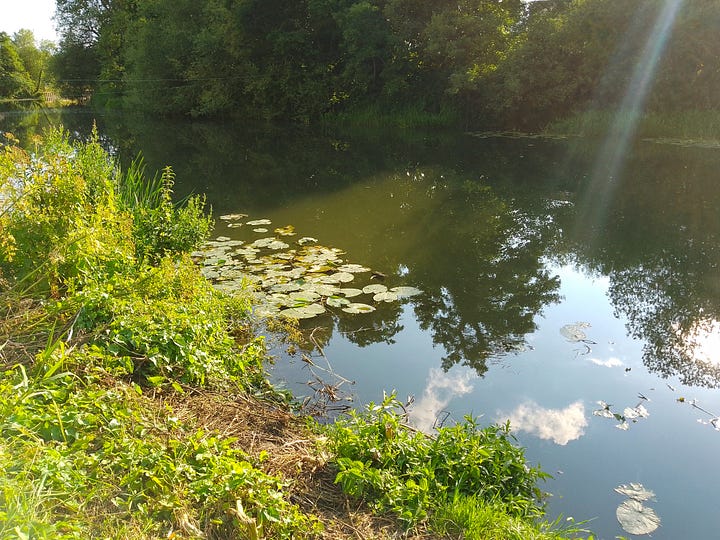
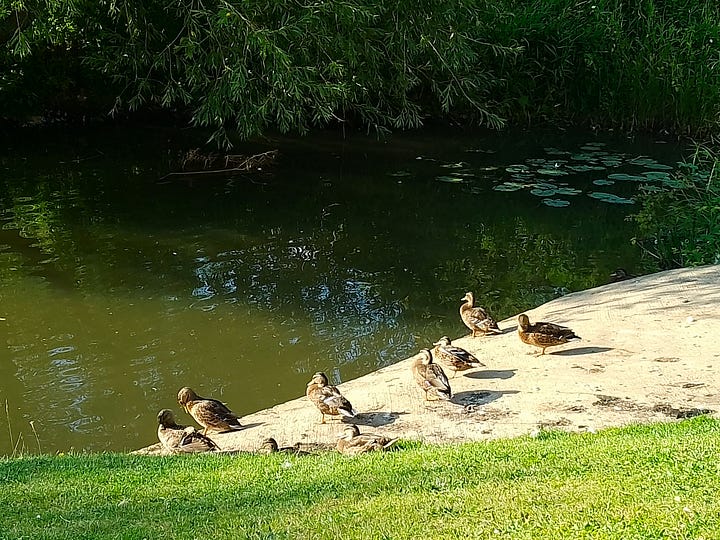
The Plot
“I know about allotments. They are places where men go to sit in their silly little sheds so they don’t have to talk to their wives.” Margo. (Series 2, Ep 2 The Good Life.)
Anyway, to get back to the subject of my allotment, I have finally been given the go ahead to start work, which I guess means I now have to start working.
I’m happy with where this plot is situated. From my house it’s a 20-minute walk along the river Avon with its local family of swans (mum, dad, and 3 kids), ducks, and lily pads. Then I cross an overgrown field (if I take the short cut), through a short tree-covered path, across a well-kept football field to the other side. Quite pleasant.
However, since my car died early this year I’m now left with the problem of transporting cardboard, compost, tools, and everything else a working allotment requires. I’m wondering if the tiny wheels on my suitcase would withstand the rough paths, or maybe I should borrow a supermarket trolley?
Sunday evening while most of the town were lubricating their larynxes in time for the final Euro showdown between Spain and England, I decided to wander over to my new garden to collect a few stalks of rhubarb that were growing defiantly among the overgrown grass. I chopped off the large umbrella-like leaves and left them there, not knowing whether they were edible or not, and made a note to do some research on the subject once I got back home.
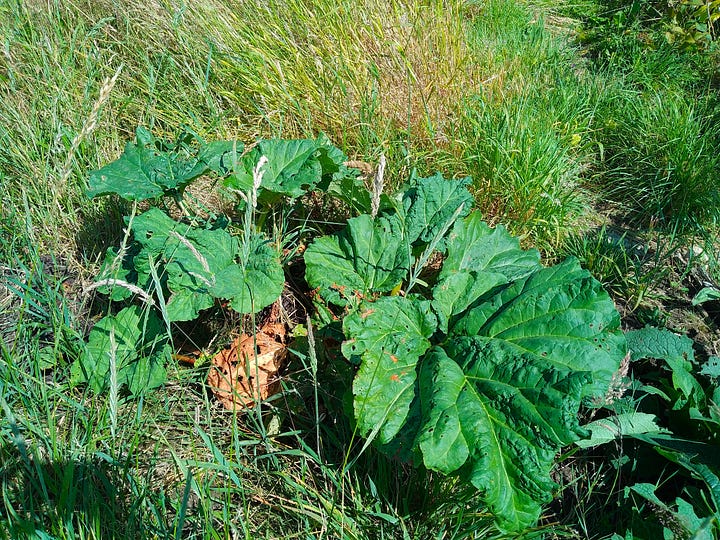

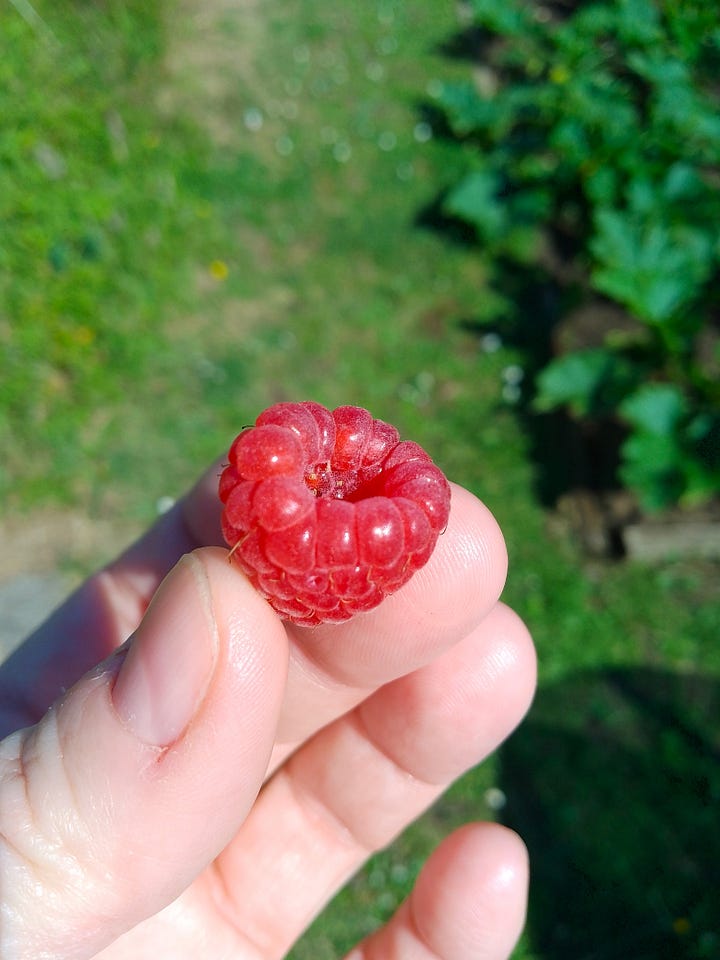
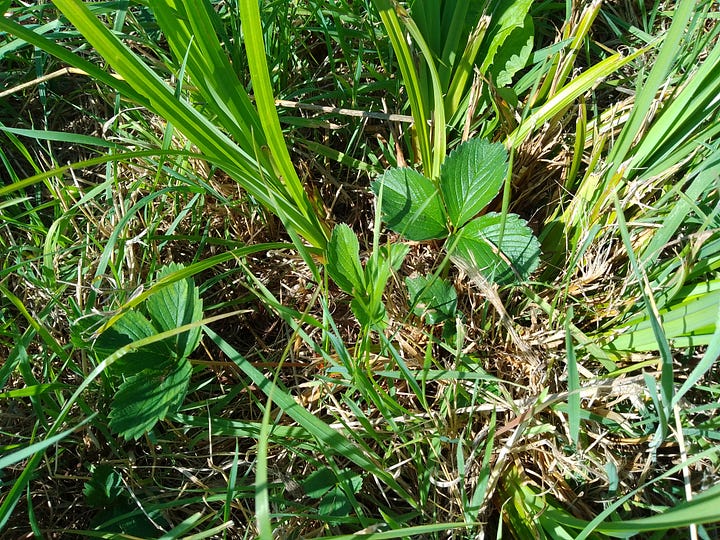
What I have learned about rhubarb.
That rhubarbs leaves are NOT edible. In fact, they’re poisonous.
They contain high levels of Oxalic Acid which is also found in ink, stain remover, and metal polish. Yummy.
I also found out that the best time to harvest rhubarb is between April and June. One website scarily warned that eating them after that could be dangerous as the stems would absorb the Oxalic Acid which could cause stomach irritation and kidney problems.
I haven’t found much more corroboration of that, but apparently peeling and cooking the stems would reduce the acid - which is what I decided to do….just in case..
Rhubarb is a perennial plant which means it grows back every year with little coaxing or resowing. It grows in wet and dry environments, in sun or shade, making it a popular vegetable for many growers. And yes, I said vegetable, because that’s what it is. And a tomato is a fruit. And Pluto isn’t a planet. Deal with it. 😋
They need two years to establish themselves, so harvesting the stems in the first year is a mistake. Mine looked pretty well established and probably a little past their prime, so I took them home for a tasty cook up with some sugar, honey, mixed spice, and dates. They’ll make a pleasant addition to my morning muesli for the next week.
Oh, and they’re packed full of vitamins A, C, and K, calcium, iron and magnesium, and are a good source of antioxidants.
So, next week I’ll let you know if it’s a suitcase, supermarket trolley, granny trolley, backpack, or…..bugger it, I’ll call a taxi.
* Series One and Two of The Good Life is available on Prime Video and various clips of some episodes can be found on YouTube.




Yes Hon, the rhubarb leaves are deadly and you need to cook well the stalks. I have had many a rhubarb pie and stewed rhubarb with custard when I was a child. My dad grew it in the garden and his allotments and please do not dig up the root when the stalks are finished, it will reinvent itself next year, E.